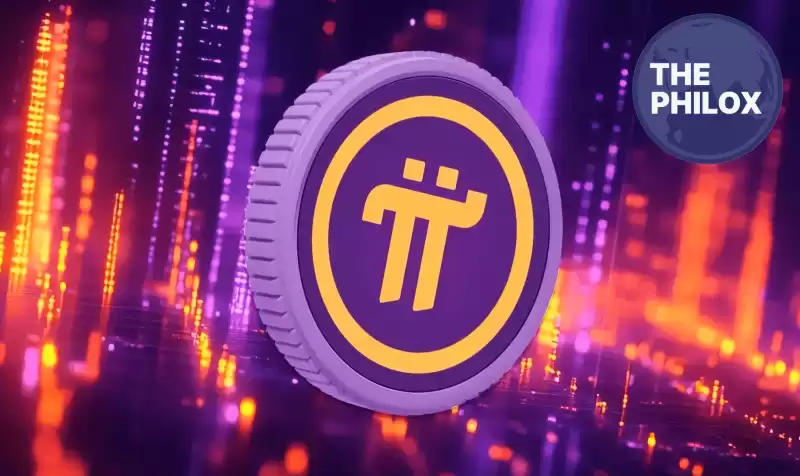 |
|
 |
|
 |
|
 |
|
 |
|
 |
|
 |
|
 |
|
 |
|
 |
|
 |
|
 |
|
 |
|
 |
|
 |
|
Cryptocurrency News Articles
Pi Coin: Dissecting the False Claims of Mobile Crypto Mining
Feb 23, 2025 at 09:07 pm
This post dissectes true mining, why Pi Coin's method isn't mining, and how it takes advantage of consumers' misperceptions of blockchain technology.

Launched in 2019 by a group of Stanford PhDs, Pi Coin set out to make cryptocurrency mining accessible to everyone with just a mobile phone. While Pi Network boasts over 50 million subscribers as of February 2025, its closed mainnet prevents its token from being openly traded on most exchanges.
Pi Network positions itself as a groundbreaking method for regular users to mine crypto, but its approach raises major questions about what “mining” really entails. This article dissects true mining, why Pi Coin’s method isn’t mining, and how it capitalizes on consumers’ misperceptions of blockchain technology.
How Real Crypto Mining Works
Contrary to clicking a button, mining cryptocurrencies is not easy. It involves complex mathematical computations requiring massive processing power to validate transactions and secure the blockchain.
1. The BackBone of True Mining: Proof of Work
Traditional mining employs Proof of Work (PoW), where miners solve cryptographic problems using either specialized ASIC processors or powerful graphics cards (GPUs).
For example, Bitcoin miners need equipment capable of computing at 150 terahashes per second (TH/s), given its high mining difficulty. The entire network hashrate of Bitcoin by 2025 is estimated to be 200 exahashes per second (EH/s)—an unimaginable level of computational capability unmatched by any mobile phone. Before transitioning to Proof of Stake, Ethereum's daily consumption of 300 megawatts of electricity showed how energy-intensive real mining is.
2. Why Phones Cannot Mine Digital Currency
A simple test run in 2024 comparing a Bitcoin ASIC miner against Pi Network’s software running on a premium smartphone showed Pi’s program reportedly using just 0.001% of the processing power and energy consumed by one Bitcoin mining unit. This demonstrates that Pi Network is not performing any actual mining.
A Raspberry Pi, a low-power computer sometimes used in experiments, was also shown to be 99.99% inefficient in mining Bitcoin, indicating that even small computers struggle with real mining, let alone mobile phones.
Debunking Pi Coin’s Mining Claims
Despite Pi Network billing itself as a distributed mining network, it falls short even in the most basic requirements for Bitcoin mining.
1. Clicking a Button is Not Mining
Pi Coin users are required to log in daily and press a button to “mine” coins. However, unlike Bitcoin miners, these users are neither confirming transactions nor solving cryptographic puzzles. Instead, individuals receive coins according to a pre-defined incentive scheme linked to referrals. Pi’s model thus operates more in line with a marketing scheme than a mining operation.
In a 2024 survey by a tech blog, 80% of Pi Coin users admitted to having no technical knowledge about mining. This suggests that Pi Network is capitalizing on people's ignorance to build a large user base.
2. Neither Proof of Stake nor Proof of Work
While it doesn’t follow Proof of Work (PoW) like Bitcoin or Proof of Stake (PoS) like Ethereum, Pi Network claims to be distributed.
There is no mining without PoW; there is no stake validation without PoS. Instead, Pi’s network is completely under the control of its developers, and users are essentially accumulating digital points rather than any real currency.
3. Consolidation Against Blockchain Values
Among the core principles behind blockchains is decentralization. Bitcoin is secure because of its distributed network of miners and nodes verifying transactions. In contrast, Pi Network operates on a closed mainnet controlled by its developers.
All user “mined” coins could vanish if the developers were to shut it down tomorrow, indicating that it is not a real cryptocurrency.
Pi Network’s Monetization Strategy: Who Really Benefits?
Instead of creating value from mining, Pi Network profits from advertisements. The Philox has previously covered how Pi Network poses as a mining platform while actually capitalizing on its users through in-app advertising.
Crypto Experts Call Out Pi Coin as a Gimmick
Multiple analysts and crypto forums have attacked Pi Network for being more of a marketing scheme than a genuine coin. Discussions on forums like BitcoinTalk and Reddit have frequently highlighted that:
Investopedia advises readers to understand real mining techniques before committing time to platforms like Pi Network, also warning against “too-good-to-be-true” crypto schemes.
Avoid Falling For False Mining Claims
Pi Coin’s claim of easy mobile crypto mining is false. Real mining not only requires more than a button press but also massive computational power. Based on the facts, the article concludes that:
Users should educate themselves on real Bitcoin mining instead of wasting time on platforms like Pi Network and steer clear of ventures capitalizing on technological illiteracy.
The future of cryptocurrencies lies in real, distributed initiatives—not referral-based schemes masquerading as mining.
Stay Connected and Share Your Stories
For all those inspired by stories of
Disclaimer:info@kdj.com
The information provided is not trading advice. kdj.com does not assume any responsibility for any investments made based on the information provided in this article. Cryptocurrencies are highly volatile and it is highly recommended that you invest with caution after thorough research!
If you believe that the content used on this website infringes your copyright, please contact us immediately (info@kdj.com) and we will delete it promptly.
-

-

-

-

-

-

-

-

-

- Coinbase Lists Reserve Rights (RSR), a Dual-Token Stablecoin Platform Aimed at Creating a Collateral-Backed, Self-Regulating Stablecoin Ecosystem
- Apr 22, 2025 at 06:40 am
- Following the announcement, Binance's 'smart money' traders are increasing long positions on the altcoin. RSR has been active since 2019, aiming to upend the stablecoin ecosystem. It's an ERC-20 utility and governance token that underpins the Reserve Protocol, a dual-token system designed to back and stabilize the Reserve stablecoin (RSV) at a $1 USD peg. RSR, a non-stablecoin, provides governance and backstop insurance to its counterpart.




























































